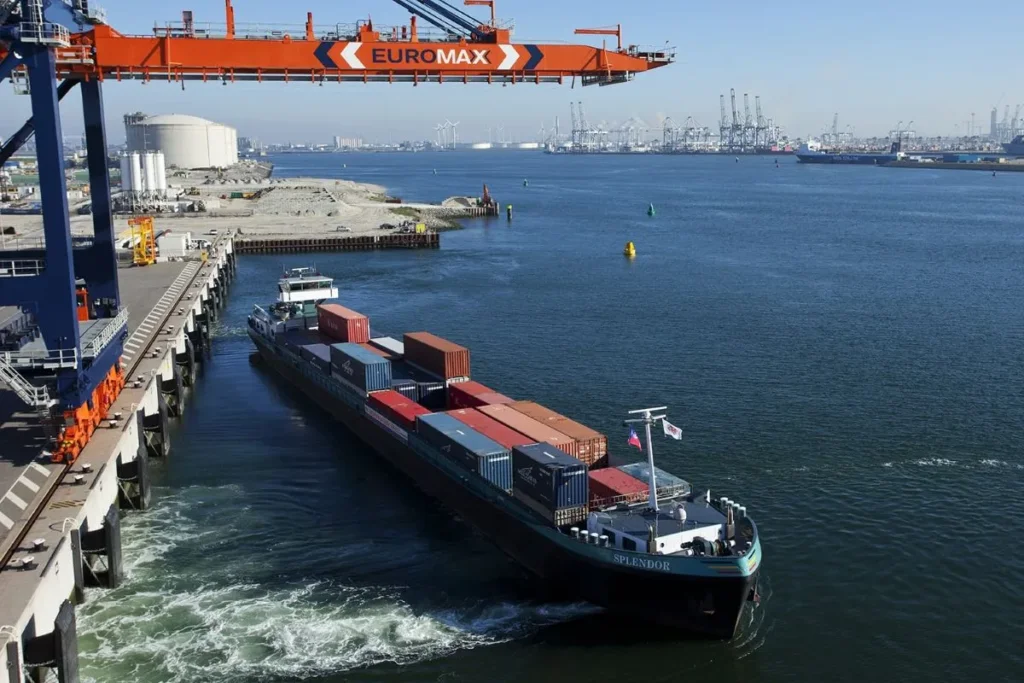Bulk cargo is mainly building materials (sand, cement, gypsum, lime, slag, ashes, aggregates), food products (milk powder, sugar, groats, flour, rice), goods for the chemical sector (granulates, fertilizers, industrial and road salt) and waste. The logistics and transport of such goods is not easy. In order to carry out these tasks well you need to have specialist resources.
Forwarding of aggregates is carried out mainly by a fleet consisting of tractors and self-unloading tipper trailers. Service providers usually also have silo vehicles and special washers with dryers.
Granules, shredded scrap (non-ferrous, steel), sawdust, bark, shredded wood (shavings), broken glass, coal, and coke are just some examples of bulk cargo. For each of the above-mentioned types of cargo a special type of vehicle is needed, which meets both specific legal and formal regulations as well as the requirements of the transported raw material or product.
When buying a semi-trailer or bodywork for transporting such goods, pay special attention to the following:
– type of material they were made of (adequate strength, resistance to stress, tightness),
– equipment with mechanisms to facilitate loading and unloading.
Among vehicles used for this purpose are: flatbed and tipping silo semi-trailers, containers (tipping chassis), bodyworks
On the Polish market, customers most often look for chassis with full drive, such as 8×8 or 8×6, large-tonnage (GVW: 32 t) and equipped with large bodies, which will allow them to transport earth, sand, gravel or other loose materials from and to the construction site.
The purchase price of means of transport for bulk materials remains a priority, however, when buying a bodywork, it is always worth to pay attention to its quality, materials and components from which it was made, as well as its capacity.
The commercial vehicle market has been governed for many years by the desire to reduce the weight of bodyworks while maintaining their durability. Reduced weight means theoretically reduced rigidity and strength. To compensate for this, today’s bodyworks are designed with increasingly better materials. Today, modern Swedish steels are used, which allow for the design of bodyworks from the thinnest possible materials while maintaining the appropriate strength.
Many companies that produce bodywork have their own design offices, so it is worth using them to configure a product tailored not only to the type of load but also to your individual needs, says KH-KIPPER.
Silos in flatbed semi-trailers can have one or more compartments; for tipping silos, there is only one compartment. In the past, the basic material used to build silos was high-strength steel sheet (hot-rolled), now the most popular is an aluminum sheet. The main advantage of the aluminium structure is that the weight of the complete semi-trailers is lower than in the case of steel structures, and thus (at the same maximum permissible weight) their maximum payload is higher (even by 5-7%).
In addition to standard silo semi-trailers, silo containers are often used in combined transport. The most common are 20, 30, and 40-foot containers (depending on the density of the transported product and the permissible total weight of the set). In order to unload the products transported in them, it is necessary to have a hopper mounted on the back of the semi-trailer, which feeds the material under appropriate pressure to the recipient’s silo.
Feldbinder is one of the manufacturers of silo type semi-trailers, self-unloading semi-trailers, as well as bodyworks and silo trailers for the transport of dust and bulk cargo.
Capacity, number and size of individual compartments, loosening system, axes, types of material hoses and equipment are agreed with individual customers. Vehicles are fitted with welded discharge bowls as standard (to prevent leaks). One example is a tractor semi-trailer with a silo capacity of approximately 31 m3. The pressure container is made of aluminum, the test pressure is 3 bar and the operating pressure is 1 bar lower. The tank is emptied pneumatically (FFB discharge bowl), and a common collection line is used.
Another example of a silo semi-trailer is the self-unloading Kassbohrer SSK60, which is just over 13 meters long and has a tank capacity of approx. 60 m3
Loading takes place through three filling manholes, using the loading hose connection. Tank is lifted (hydraulic tipping with front cylinder), lifting angle is 48 degrees. Semi-trailer hydraulics is powered by tractor. The front wall is slanted. Reinforcement profiles are installed along the tank (on the right and left side). The SSK60 is 13.6 m long and the tank diameter is 2.53 m. Semi-trailers of this type are also available in the following variants: SSK 45; SSK 50; SSK 63; SSK 70; SSK 90.
A non-tipping silo SSL 35 is also available from this manufacturer. The self-supporting, lightweight tank structure is reinforced with brackets. The tank has a circular cross-section and only one compartment. The length of the silo is 9.55 m, the empty weight 4.5 t and the GVW is 35.5 t.
Photo: Pixabay









